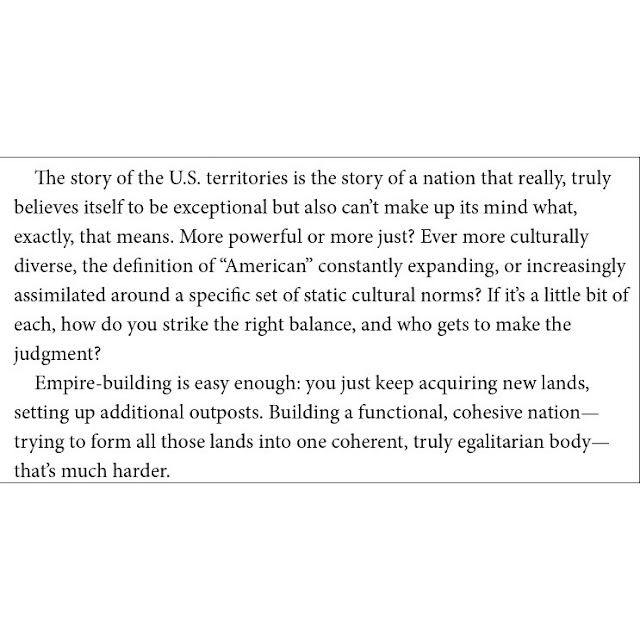While all the books I review on my blog are Advance Reader Copies (ARCs) which the publishers have graciously granted me access to via NetGalley, I want to thank Penguin Random House for allowing me to get a sneak read of this one. The news coming from the United States are dismal and depressing and I needed to escape into Chick Lit, I needed the printed equivalent of a romantic comedy and as she almost always does, Kinsella delivered.
I found myself enthralled with the story of Katie/Cat Brenner. At first I thought the book was going to be similar to The Devil Wears Prada because of Demeter, the marketing guru/dragon lady who seems to want to stop other females in the company from ascending the ranks. Soon we meet Alex, who is poised to become the romantic interest for the duration of the novel. Readers who are familiar with this genre will be able to predict Alex's identity before Katie does, but this does not detract from enjoying their first scene together as they try out adult toys... not that kind! More PG: stilts, tennis rackets that light up, and a drone.
Demeter slowly starts losing control of her tightly run empire. She misses deadlines, forgets appointments, and didn't realize she hadn't fired Katie when she thought she had. This last one was particularly hurtful to Katie who said a few things to Demeter, and the partner who was with her, that burn any bridges she may have had with the prestigious marketing company that used to employ her.
Katie is devastated. Contrary to what she portrays on her Instagram feed her life is not-so perfect. She is forced to hide how spartan her London life is from her overprotective, farmer father who want her to come back home and help out at the farm. Because she has the means to live in London for two more months, she decides to hide her unemployment from her father and stepmother.
Rather conveniently, her family has plans to convert the farmhouse into a glamping site. Katie is skeptical that this may be another one of her father's failed business schemes, but feels reassured when Biddy, her stepmom, asks for her help to convince Mick, Katie's father, to go about this properly instead of buying the cheapest materials available. While she had been working in London, Katie created promotional materials including a website for the new business. She was also an unofficial consultant to the venture. When the first guests sign up, Biddy wonders if Katie could move back and help. Her offer includes a salary.
Katie concocts a lie and says she is able to go for a few months because the company gave her a sabbatical. However, she soon finds that it will become a lot harder to maintain the lie because Demeter has booked a week in the farm!
I highly recommend this book to readers seeking a light, fluffy, fun, fully-satisfying fast read.
I found myself enthralled with the story of Katie/Cat Brenner. At first I thought the book was going to be similar to The Devil Wears Prada because of Demeter, the marketing guru/dragon lady who seems to want to stop other females in the company from ascending the ranks. Soon we meet Alex, who is poised to become the romantic interest for the duration of the novel. Readers who are familiar with this genre will be able to predict Alex's identity before Katie does, but this does not detract from enjoying their first scene together as they try out adult toys... not that kind! More PG: stilts, tennis rackets that light up, and a drone.
Demeter slowly starts losing control of her tightly run empire. She misses deadlines, forgets appointments, and didn't realize she hadn't fired Katie when she thought she had. This last one was particularly hurtful to Katie who said a few things to Demeter, and the partner who was with her, that burn any bridges she may have had with the prestigious marketing company that used to employ her.
Katie is devastated. Contrary to what she portrays on her Instagram feed her life is not-so perfect. She is forced to hide how spartan her London life is from her overprotective, farmer father who want her to come back home and help out at the farm. Because she has the means to live in London for two more months, she decides to hide her unemployment from her father and stepmother.
Rather conveniently, her family has plans to convert the farmhouse into a glamping site. Katie is skeptical that this may be another one of her father's failed business schemes, but feels reassured when Biddy, her stepmom, asks for her help to convince Mick, Katie's father, to go about this properly instead of buying the cheapest materials available. While she had been working in London, Katie created promotional materials including a website for the new business. She was also an unofficial consultant to the venture. When the first guests sign up, Biddy wonders if Katie could move back and help. Her offer includes a salary.
Katie concocts a lie and says she is able to go for a few months because the company gave her a sabbatical. However, she soon finds that it will become a lot harder to maintain the lie because Demeter has booked a week in the farm!
I highly recommend this book to readers seeking a light, fluffy, fun, fully-satisfying fast read.


















